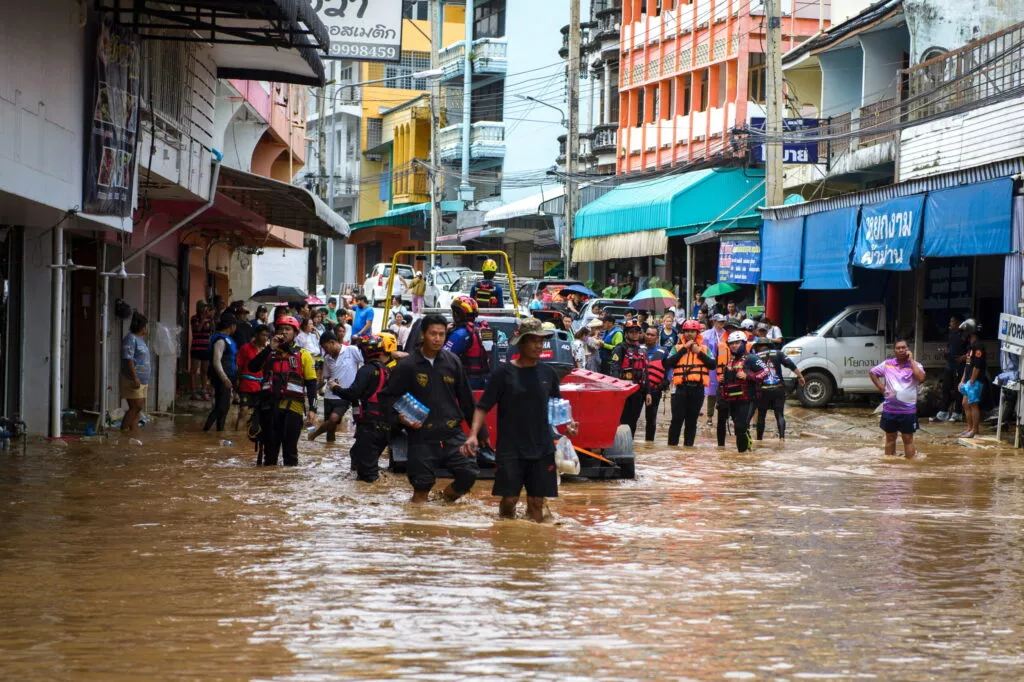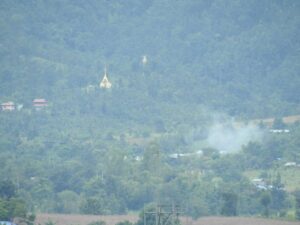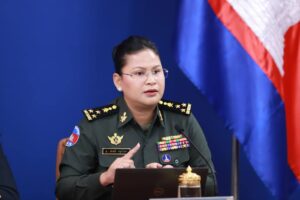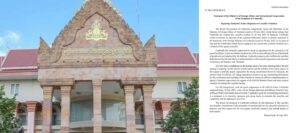Weathering the economic storms of the ASEAN climate
As extreme weather events become ever more frequent and destructive, the ASEAN region must strengthen infrastructure and enhance coordination to protect its global economic potential. Beyond dialogue, the region urgently needs to build climate-resilient infrastructures, develop sustainable industries and revise financial models in support of smallholder operators, with a higher emphasis on multilateral initiatives to combat shared climate risks.
Home to one of the fastest-growing economies in the world, ASEAN faces unique challenges as climate change intensifies tropical storms and disrupts supply chains. The region’s future hinges on its ability to strengthen infrastructure, protect small businesses and foster collective action.
The European Union leads the way in regional climate action, rallying member states around a common climate risk mitigation strategy and legally binding countries to specific, time-bound targets. By contrast, ASEAN is a much more loosely coupled region with a preference for laissez faire cooperation. If the region were to preserve its global economic promise within a rapidly warming climate, Southeast Asian countries would need to forge closer and more coordinated partnerships with each other.
In 2024, the region collectively comprised the fifth-largest economy in the world and among the most rapidly growing. By 2040, the region is projected to be the fourth largest.
Southeast Asia’s growth is predominantly export-driven. Its young, educated and skilled workforce is cost-efficient, making it a highly attractive destination for manufacturing-related foreign direct investment. It has thus rapidly increased its manufacturing exports, playing a key role in the ‘China Plus One’ strategy which involves diversifying supply chains away from China. Indeed, China itself is making significant manufacturing investments in the region.
The region’s geography offers a further benefit to its exporting activity. It has a long coastline that connects maritime trade routes between East Asia, the Middle East and Africa. The Southeast Asia region is a rapidly developing manufacturing and logistics hub.
Unfortunately, Southeast Asia’s geographic advantages come with significant drawbacks. Southeast Asia is located in the western North Pacific basin, which is the world’s most active basin, producing 30 per cent of all tropical cyclones. Between 1970 and 2019, approximately half of the tropical cyclones in the western North Pacific basin made landfall in Southeast Asia. Parts of Southeast Asia fall within ‘Typhoon Alley’, with the Philippines receiving the highest number of landfalls in the region and among the highest in the world.
The global economic promise of Southeast Asia must be viewed in light of its vulnerability to tropical cyclones, which early climate models predict will increase in frequency and intensity over the course of the 21st century. Southeast Asia suffered an estimated US$32 billion in typhoon-related economic losses between 1987 and 2016. Extreme weather events and their associated economic losses have continued to plague the region in recent years, with typhoons, storms and floods affecting Southeast Asia’s agriculture, infrastructure, tourism and transport.
This economic disruption extends well beyond the region because of Southeast Asia’s position in upstream and downstream interlinked global value chains.
Export growth in Southeast Asian countries has been driven mainly by electronics manufacturing. The risk of extreme weather events causing operational disruptions like damage to manufacturing plants can be reduced by modifying building structures to increase their durability. But while reinforced buildings are a crucial safeguard against environmental catastrophes, there are outstanding vulnerabilities in critical utility infrastructure such as power, telecommunications, roads and transport. Even if manufacturing plants come out of an extreme weather event relatively unscathed, the risk of operational disruptions due to utility and infrastructure failure remains significant.
The 2013 Typhoon Haiyan in the Philippines caused extensive damage to airports, harbours and roads, which paralysed business operations and hampered the emergency response for weeks. In 2024, Typhoon Yagi severely disrupted Vietnam’s supply chain and logistics industry, prompting both the government and independent analysts to lower the country’s GDP growth forecast for the year.
Apart from electronics, Southeast Asia’s major exports include metals, minerals, textiles and garments and agricultural products. Upstream agricultural production is highly vulnerable to storm-related disruptions which affect the price and supply of downstream products.
Around 98 per cent of businesses in Southeast Asia are micro-, small- and medium-sized enterprises, contributing 66 per cent of total employment, 41 per cent of regional economic activity and 13 per cent of exports. A significant segment of these are smallholder farmers, many of whom live in poverty and typically experience total loss from destructive storms. While individually tiny, the collective economic contribution of micro-, small- and medium-sized enterprises make or break downstream global value chain activity, ultimately affecting Southeast Asia’s major markets.
Effectively mitigating climate and economic risk requires ASEAN to go beyond the dialogue, capacity-building and consolidated reporting that is characteristic of its environment action. Tangible outcomes in building climate-adapted infrastructures, developing climate-resilient industries and redesigning financial models to support smallholder operators are urgently required.
The stimulus for the region to work collaboratively towards tangible climate outcomes may come from its major external partners. While some major trading partners such as the European Union, Japan and South Korea consistently acknowledge the importance of Southeast Asia as a regional partner, strategic initiatives have remained largely bilateral. But other partners such as the United States and Australia are moving towards minilateral initiatives. This encourages more Southeast Asian countries to collaborate on solving shared problems, such as climate issues in the Mekong affecting Cambodia, Laos, Myanmar, Thailand and Vietnam.
ASEAN countries should more actively engage in minilateral initiatives as a step towards region-wide climate and economic risk mitigation. Employing a coordinated systems approach to risk mitigation safeguards the flows of goods, services and information in resilient global value chains. The ability of Southeast Asia to deliver on its global economic promise depends on the region weathering its storms.
Source EastAsiaForum







